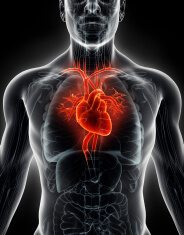
OVERVIEW
Atrial Fibrillation is an uncoordinated beating of heart’s left atrium and right atrium. Both atria must be in normal rhythm for the heart to pump blood effectively and efficiently from the atria into the ventricles.
CAUSES OF ATRIAL FIBRILLATION
The exact cause of Atrial Fibrillation is not known. The risk of developing Atrial Fibrillation increases with age and it is associated with some of the following conditions / factors:
- High blood pressure
- Coronary artery disease
- Overactive thyroid gland
- Heart valve disease
- Excess alcohol or caffeine intake
- Stimulant medication
SYMPTOMS
If you have Atrial Fibrillation you may experience a rapid and irregular heartbeat, palpitations, dizziness, tiredness, shortness of breath or chest pain. Some people may not notice any symptoms at all.
DIAGNOSIS OF ATRIAL FIBRILLATION
Test and investigations include:
- an Electrocardiogram (ECG)
- Heart Monitor
- Echocardiogram – ultrasound of the heart
- Blood tests
- Coronary angiogram
TREATMENT OF ATRIAL FIBRILLATION
Medication may be prescribed to help:
- Beta blockers may be used for rate and rhythm control
- Blood thinners may be prescribed to help prevent clot formation, and reduce the risk of a stroke
TREATMENT WITH CARDIOVERSION
If Cardioversion is required, an electric current is delivered through special gel pads positioned on the patient’s chest. Cardioversion may help the heartbeat return to a normal regular rhythm.
CARDIAC ABLATION
This procedure can correct the heart rhythm arrhythmia. A catheter (long thin wire) is passed into the heart chambers via a large blood vessel at the top of the leg or arm. Radio waves emitted from the top of the catheter destroy small areas of the heart tissue that may be triggering the abnormal heartbeats.
